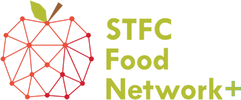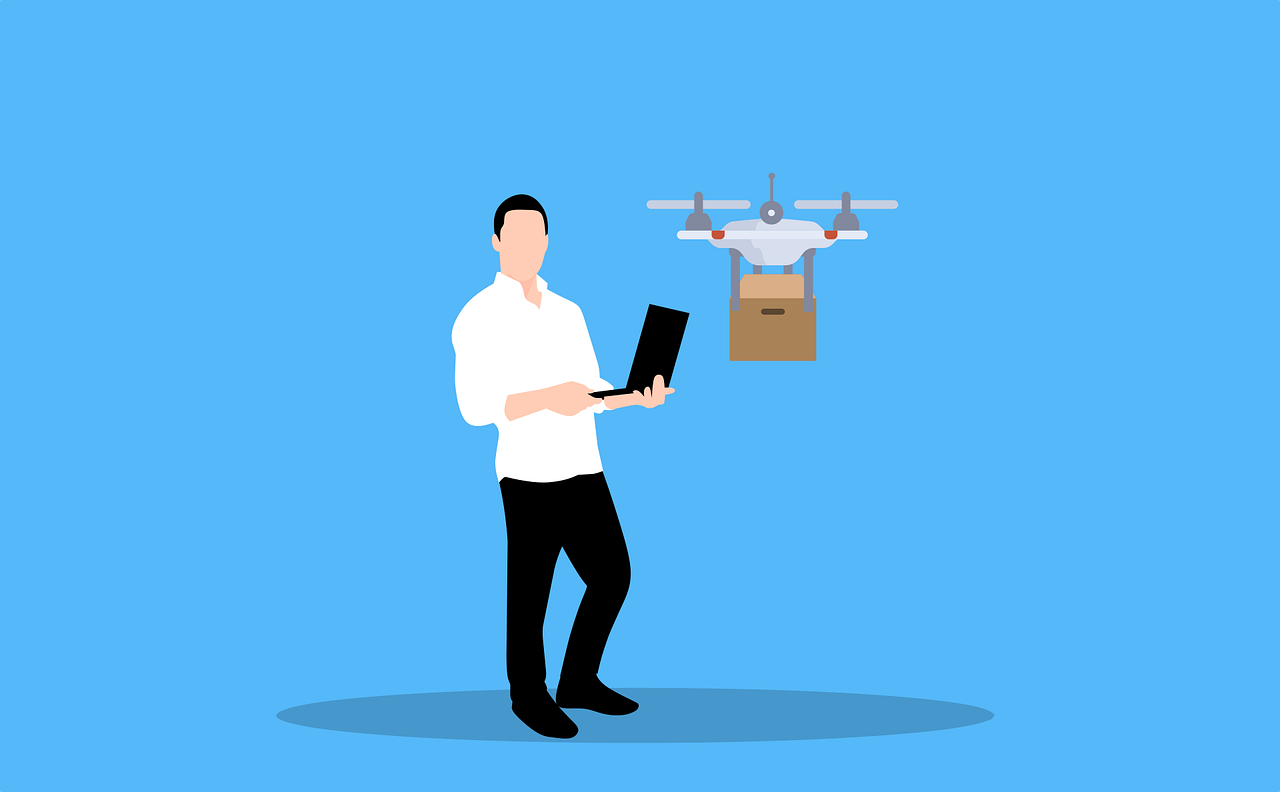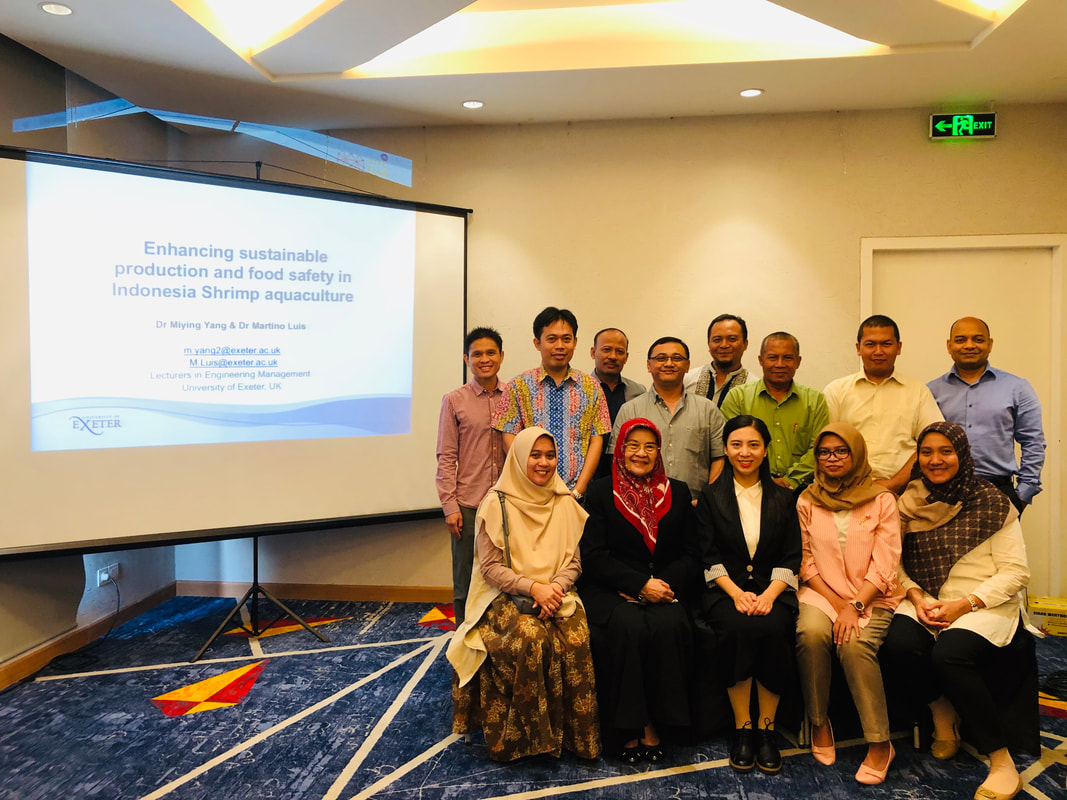|
New technologies are disrupting every step of our food supply chains, from the foods we produce, to how we harvest, store, prepare and shop for it. How will these exciting trends shape perhaps the most ‘traditional’ meal – the Christmas Dinner – by 2050? Caroline Wood asked champions and members of the STFC Food Network+ (SFN) for their thoughts… For many of us, Christmas immediately conjures up pictures of a family roast dinner: turkey, goose, beef or ham. But increasing concerns about climate change and the environmental impacts of industrial animal farming (including pollution and deforestation to produce animal feed) are driving a growing trend towards alternative proteins, such as lab-grown meat. “There are really exciting things around the corner in lab-grown and fermented protein research that in 50 years may be able to produce a lab-grown turkey that tastes better than anything we have today” says Sean Peters, CEO at DryGro. But with so many hurdles to overcome, including scale-up, regulatory approval and consumer acceptance, he admits that this is likely to be some time yet. “In the short run, for many people Christmas dinner may look very similar, but instead of the ubiquitous soybean, the animals that supply their Christmas turkey or ham may be fed from more sustainable ingredients, sourced much closer to where the animals were raised.” These may include animal feeds based on insects or Lemna: a protein-rich aquatic plant. Dry Gro is currently working to develop enclosed growing units that will enable industrial-scale production of Lemna in arid regions where soybean cultivation is not possible. Even if our ingredients will still be sourced from farms for now, vastly accelerated plant and animal breeding – driven no doubt by gene-editing technologies such as CRISPR-Cas9- may already have started to alter the taste, texture and nutritional profile of our Christmas foodstuffs. “It’s likely that future plant and animal breeders will not just focus on yield but also consider nutrition, storage, and gastronomic potential” says Christian Reynolds (City, University of London). “This could see us enjoying sweeter-tasting sprouts, nutritionally-enriched spuds or even strawberries designed to grow during the UK autumn.” He also points out that the impacts of climate change will almost certainly see new food ingredients on our plates from more resilient plants. A report from Knorr and the WWF in 2019 profiled 50 ‘Foods for the Future’ that collectively have high nutrition, low environmental impacts and climate resilience. So perhaps our Christmas Meal will include climate resilient delicacies such as cacti, lotus root, sprouted chickpeas, pumpkin flowers and algae? Whatever we put on our plates, getting hold of the ingredients for our Christmas meals might become a lot easier, thanks to big data analytical tools that may help supermarkets more accurately forecast the stock levels required, leading to less empty shelves. Laura Wilkinson (Swansea University) is currently involved with a SFN project to develop models which can predict consumer behaviour through social media discussions. “The ability to capture external information and the sentiment of individual consumers via data analytics and social media may allow for more precisely estimating consumer demand, even during the hectic Christmas run-up” she and the project team say. “This could help stores to keep stock costs low, target promotions and reduce overall waste. We hope these tools could also help direct unsold produce to communities that are in need of them, for instance via charities.” But it may be that we don’t shop in advance for our Christmas Dinner – in fact, we might not even decide what to have until Christmas morning itself. The increasing sophistication of wearable health trackers and our ability to mine biomimetic information may lead to all our meals being individually optimised on the day to our needs. “Based on the current use and generation of data by apps and devices, I think the next step will be that we use this information to inform our decisions about food and overall lifestyles” says Ximena Schmidt, STFC Food Network Champion and a life cycle sustainability expert (Brunel University). “So, based on both health information (such as weight and blood pressure) and data gathered about our lifestyle (for instance food preferences, favourite recipes, geolocation), these devices will propose the most suitable Christmas Dinner for each of us.” Perhaps it could even be nutritionally optimised to reduce any alcohol-fuelled damage from Christmas Eve parties the night before? John Vandore, STFC Food Network and Business Development at Harwell Campus, agrees although he believes these devices will eventually progress to an implant. By that time, the stress of preparing the Christmas meal may well be a thing of the past. “For urban populations, I suspect there will be turbocharged online ordering and delivery, no doubt with drone deliveries playing a part. In high rise residential housing, this may be augmented with vertical farms making fresh vegetables available at the push of a button on each floor” he says. Once we’ve assembled our ingredients, we may well cook our Christmas meals using different methods to now. A study led by Christian Reynolds found that depending on the food product, the greenhouse gas (GHG) emissions from cooking can be decreased by up to 16-fold by using more efficient methods. “Ovens are the least sustainable common cooking appliance, since they typically require long cooking times and high energy demands” he says. Electric grills are a better option since these only consume half the energy, but this may be a hard sell for those particularly attached to the memories and aromas associated with ‘a proper roast dinner’. Nevertheless, as smart energy-readers make us acutely aware of our energy consumption around the home, it’s likely we’ll move away from boiling and steaming foods on the stovetop: a highly-inefficient method due to energy losses and the long time required to reach the cooking temperature. “In contract, microwaving can reduce GHG emissions by 41-78%” says Christian. Electronic pressure cookers may also come in vogue: since these substantially shorten the cooking time, these are a highly efficient way to cook meat, pulses, potatoes and vegetables. By 2050, Christmas Dinner may not just be eaten on Earth: will human colonists on the moon (and maybe even Mars) also be tucking into a special meal on the 25 December? Stephen Ringler, CEO & Founder of the Space Store and Spacetime Development is optimistic: “There are promising experiments being conducted to see if we can turn Martian and lunar surface material into soil safe to grow food. Another alternative would be to us hydroponics, growing plants using nutrient-rich solutions without soil.” As for the non-plant components of the meal, he is hopeful that space travel will have advanced enough by then to allow regular shipments from Earth.
Wishing you all a very peaceful Christmas and New Year from the STFC Food Network+ !
0 Comments
The STFC Food Network+ (SFN) has helped launch a visionary project which aims to use systems analysis, digital platforms and space technologies to revolutionise agri-food supply chains in India. The moment a crop is harvested, it begins to spoil. This isn’t too much of a problem in modern systems where they are quickly whisked to consumers, arriving fresh and intact. But in developing nations lacking such infrastructure, huge quantities of perishable food are lost between farmers and consumers. For these regions, simply producing more food won’t help solve food insecurity unless these supply chain issues are fixed. Food loss occurs for a variety of reasons, including lack of cold storage, poor road networks and challenging climates. Developing communities are also typically made up of isolated pockets of farmers that are poorly connected to the rest of the supply chain, making it difficult to match supply with demand. With so many interconnected factors and problems, it is challenging to identify where effective interventions can be introduced. This is the aim of TRAnsforming Cold Food Chains in INdia through Space ScIence and TechNologies (TRANSSITioN). Using a systems-wide approach, this will identify relevant cutting-edge and indigenous technologies for digitising agriculture production, connecting farmers to supply chains, reducing food loss and managing food surplus. The project is a collaboration involving the University of Sheffield, the Science and Technology Facilities Council (STFC) and a range of partners from industry, NGOs, logistics providers and farming organisations. The SFN played a crucial role in the project’s launch by funding the pilot phase through a Scoping Grant. This involved a stakeholder workshop in India which brought together farmers, producers, distributors and retailers to discuss the key problems affecting their industries. Based on these discussions, the team successfully secured funding for a full-scale project proposal from the UK Government’s Global Challenge Research Fund and the STFC. The different work packages include: Identifying key leverage points for change: Using food systems concepts and methods, this will determine the obstacles, risks and opportunities for supply chain transformation in India. This will be coupled with life cycle analysis (LCA) to understand the wider impacts of possible interventions, including energy, carbon emissions, water and toxins. Digitising agriculture and connecting farmers: This will investigate the most effective digital platforms to connect farmers to supply chains. In addition, it will explore how Internet of Things (IoT) technologies and remote sensors can link farmers to data (such as soil health, local weather and crop diseases) that can help them increase productivity, farm more sustainably and be more climate resilient. Reducing losses and maximising value: Drawing on expertise from STFC’s RAL Space facility, this will investigate how existing, indigenous methods can be integrated with advanced capabilities (including space technologies such as cryogenics and thermal modelling) to increase the shelf life of fresh produce. It will also investigate new materials and methods for improving thermal insulation on farm, during transportation and storage. New business models and policies to support rural livelihoods: This will engage stakeholders and communities to co-design new public-private partnerships and funding models, including microfinance. The need for a holistic approach
“There is a clear opportunity to have a big impact on reducing agri-food loss throughout supply chains in India. But any changes have to work in the context of the existing system, be economically feasible and not harm farmers or the environment. That’s why we are using a holistic approach, rather than looking at things in isolation” says Seyed M. Ebrahimi (University of Sheffield). With a diverse background covering supply chain management, LCA, finance, banking, and computer software, Seyed seems aptly qualified for such a multidisciplinary challenge. So far, he has been involved with helping to map different end-to-end supply chain configurations for tomato and mint, which has involved visiting around 50 different farms across southern India. He is now combining this with data from the pilot workshop into a complete LCA and socio-economic evaluation of proposed interventions. Such extensive mapping work is crucial to avoid unintended consequences, and can also lead to counterintuitive findings as Seyed explains. “A key contributor to tomato spoilage is fluctuations in temperature. Our preliminary data suggest that if tomato crops are only put in cold storage at the end of the chain at the retailer, it may actually be worse than not using cold storage at all.” Ultimately, TRANSSITioN aims to introduce economically feasible technologies that enable cold storage throughout the chain, whilst meeting social and environmental priorities. Yet this work has identified other changes that could be made more quickly, such as on-farm grading technologies that reduce handling at downstream distribution centres, prolonging product life. The power of partnerships Linking up small scale farmers – many of whom still rely on handwritten notes – with the latest technologies won’t be easy, but TRANSSITioN is giving itself the best chance of success by partnering with government bodies, the Centre for Sustainable Agriculture, the Society for Elimination of Rural Poverty and retail giants such as Amazon India. Being part of the SFN is also proving instrumental in helping the team access expertise in advanced technologies being developed at the following STFC facilities: RAL Space, Cryox, ASTeC, and IBM Research at Hartree Centre. “This is a very exciting project – the more you delve into it, the more you realise how challenging it is to introduce changes that will really work in these systems. A lot of these capabilities – such as cryogenics and thermal engineering – have only been proven in aviation and formula one facing; they have never been tested in the agri-food sector. That is why it is so important to work in partnership” Seyed concludes. Shellfish are a highly nutritious and a sustainable protein source, and provide livelihoods for people in numerous rural regions all across the globe. The UK alone imports over £700 million of shrimp each year. Yet shrimp farming is currently highly inefficient: globally, nearly 40% of shrimp are lost due to reasons that include extreme weather, disease and supply chain issues. Such wastage results in reduced profits for farmers, increased prices for consumers and greater environmental impacts. A project launched by the STFC Food Network+ (SFN) is working to make the Indonesian shrimp farming industry more efficient and sustainable, using digital technology and new business models. Mapping the challenges “There are many new technologies that could really benefit small scale shrimp farmers in Indonesia” says Miying Yang (University of Exeter). “But to work out the best changes to introduce, we first needed to understand the different stakeholder needs and the realities of the industry that these interventions would have to work in.” To explore the challenges facing the shrimp farming industry and the potential for digital solutions, Miying and her colleagues* conducted a feasibility study, funded by an SFN Scoping Project award. The team travelled to Indonesia in July 2019 to host a workshop which brought together stakeholders from across the entire shrimp value chain. This included shrimp farmers, distributors, farming associations, retailers and government officials. The format of the event was structured on a framework Miying developed during her PhD research on developing methods to analyse and assess sustainability metrics from life cycle and multi-stakeholder perspectives. “The atmosphere was outstanding – much better than I expected it would be. We even ended up being featured in the local newspaper!” says Miying. Thanks to support from interpreters from a local university, the research team could involve all the participants, including those who spoke no English, and present the aims of the project before the discussions began.  The research team were even featured in the local newspaper! (Credit: Miying Yang) The research team were even featured in the local newspaper! (Credit: Miying Yang) Seventy different industry challenges were identified, which the team grouped into twelve themes. The stakeholders were then asked to rank these themes according to their importance and how feasible they felt it would be to tackle them. “The final results indicated that the most impactful issues to target included fluctuating water conditions, disease and cannibalism, where the shrimp feed off each other” Miying says. This information allowed the team to develop a proposal and secure a £50,000 grant from the Engineering and Physical Sciences Research Council’s Internet of Food Things Network+ to launch a full-scale project to tackle these issues. Predictive assistance in aquaculture management Drawing on the key challenges identified by the pilot project, Miying and her colleagues are focusing on an internet of things (IoT)-enabled system to automatically monitor different qualities of the water in shrimp farms. The team are working on a prototype model where off-the-shelf water sensors collect real-time data on parameters such as dissolved oxygen, salinity and water temperatures. The data is then automatically sent to an IoT Cloud database. These datasets will allow big data analytics to develop predictive algorithms for how conditions may change in the future. The ultimate aim is to integrate this with a web-based platform or smartphone app that can send alerts directly to individual farmers. “This predictive assistance will allow farmers to make decisions on a scientific basis, rather than relying on their instincts” says Miying. “For instance, such an app could send notifications about when to feed the shrimp since this needs to be finely balanced. If they are fed too much, this wastes feed, but if they are fed too little, they start to eat each other.” Besides helping farmers to take preventative action to reduce death and disease, this could also help them to minimise their environmental impacts through reducing inputs of feed and chemicals. Digitally-enabled business models and transparent supply chains Meanwhile, the team are also considering how to tackle the inefficiencies within the shrimp supply chain that reduce the overall quality and add to the cost of the product for the consumer. “Farmers, distributors and retailers across the Indonesian shrimp supply chain are not working collaboratively or sharing data. But there would be real benefits to all if they could be linked in a fully safe, traceable system using digital technologies” says Miying. Fully digitalised supply chains could allow demands to be communicated to suppliers and distributors more quickly, reducing the time shrimp are kept in storage. Greater transparency could also reduce the cost of assessing shrimp to check it meets food standards requirements – which can be an expensive burden for small-scale farmers. According to Miying, introducing such a system is not limited by technology, but by more fundamental barriers including governance, data trust, and stakeholders’ willingness to participate. “People need to see the tangible benefits of sharing their data for this to work. We are looking for funding opportunities to work on building a technological prototype for a fully traceable supply chain.” ************ Having worked mainly in manufacturing in the past, the project has immersed Miying into a totally new world for her in the food sector. “It has been really exciting for me to apply my skills to solve different problems and find innovations that help industries to be more sustainable and circular” she says. But having grown up in Zhejiang, the coast of South East China, she has always had a love of seafood: “Especially fried rice with shrimp!” You can learn more about the project through a short video at https://vimeo.com/368769846 *The project team includes Dr Miying Yang (University of Exeter), Dr Martino Luis (University of Exeter), Dr Jens Jensen (STFC), Professor Peter Ball (University of York) and Rakesh Nayak (LeanSig Ltd; STFC Food Network+ Liaison) |
AuthorJune 2024 - Archives
June 2024
Categories |
- Home
- Webinars and Events
- About the SFN+
- News
- Blog
- Expert Working Groups
- Funding
-
Publications
- Bioeconomy positioning paper
- SFN+ 5th Annual Conference
- OMM Policy Report
- ‘Multi-Stakeholder International One Day Workshop on Organic Agri-Food Value Chains for Net Zero’ Report
- SFN 2050 UK Net Zero Food report
- Sustainable Cold Food Chain Booklet
- Food Sensing Technologies for Safe and Nutritious Food
- Sustainable urban and vertical farming
- Projects
- Join/Contact Us










 RSS Feed
RSS Feed


